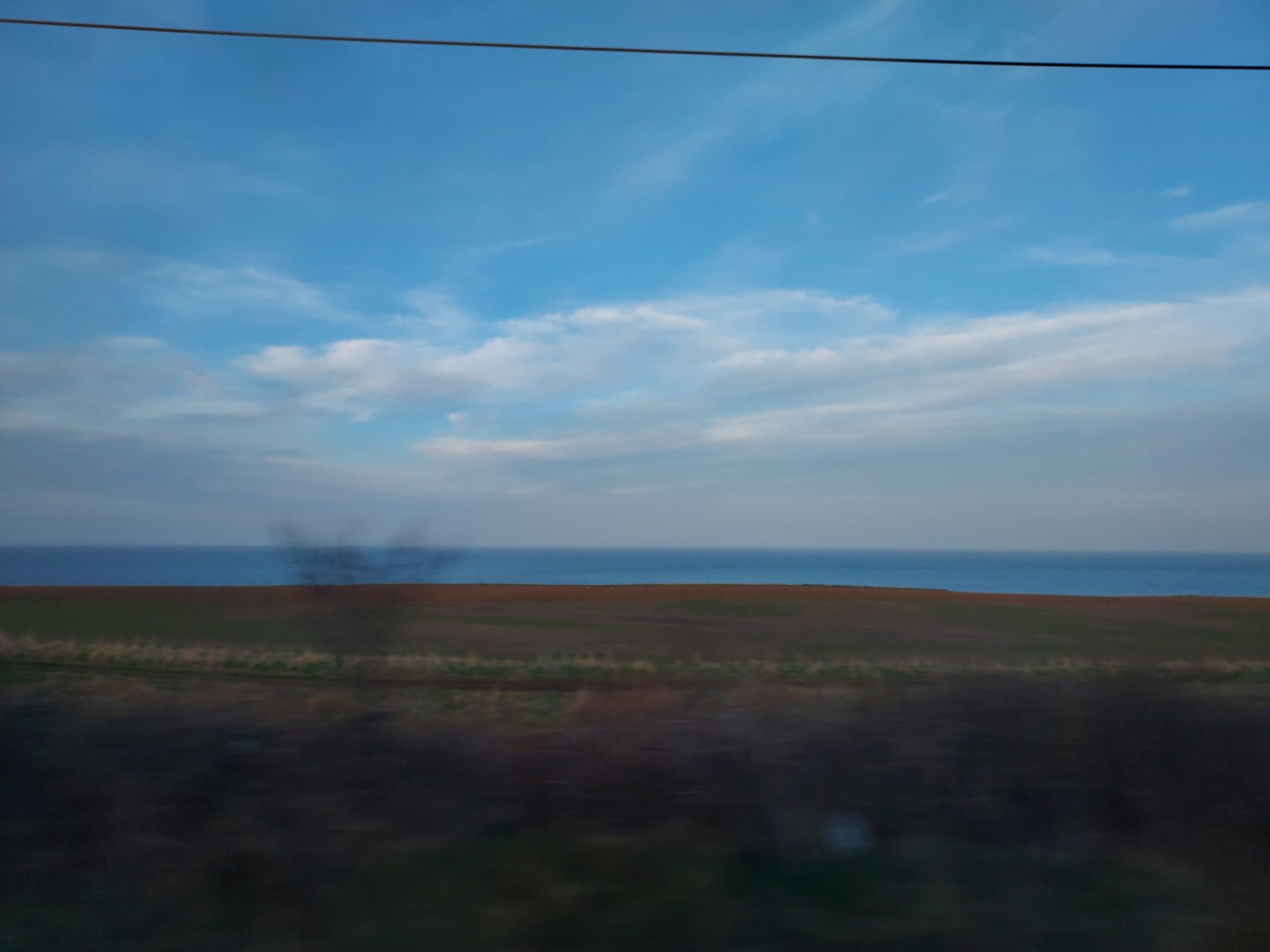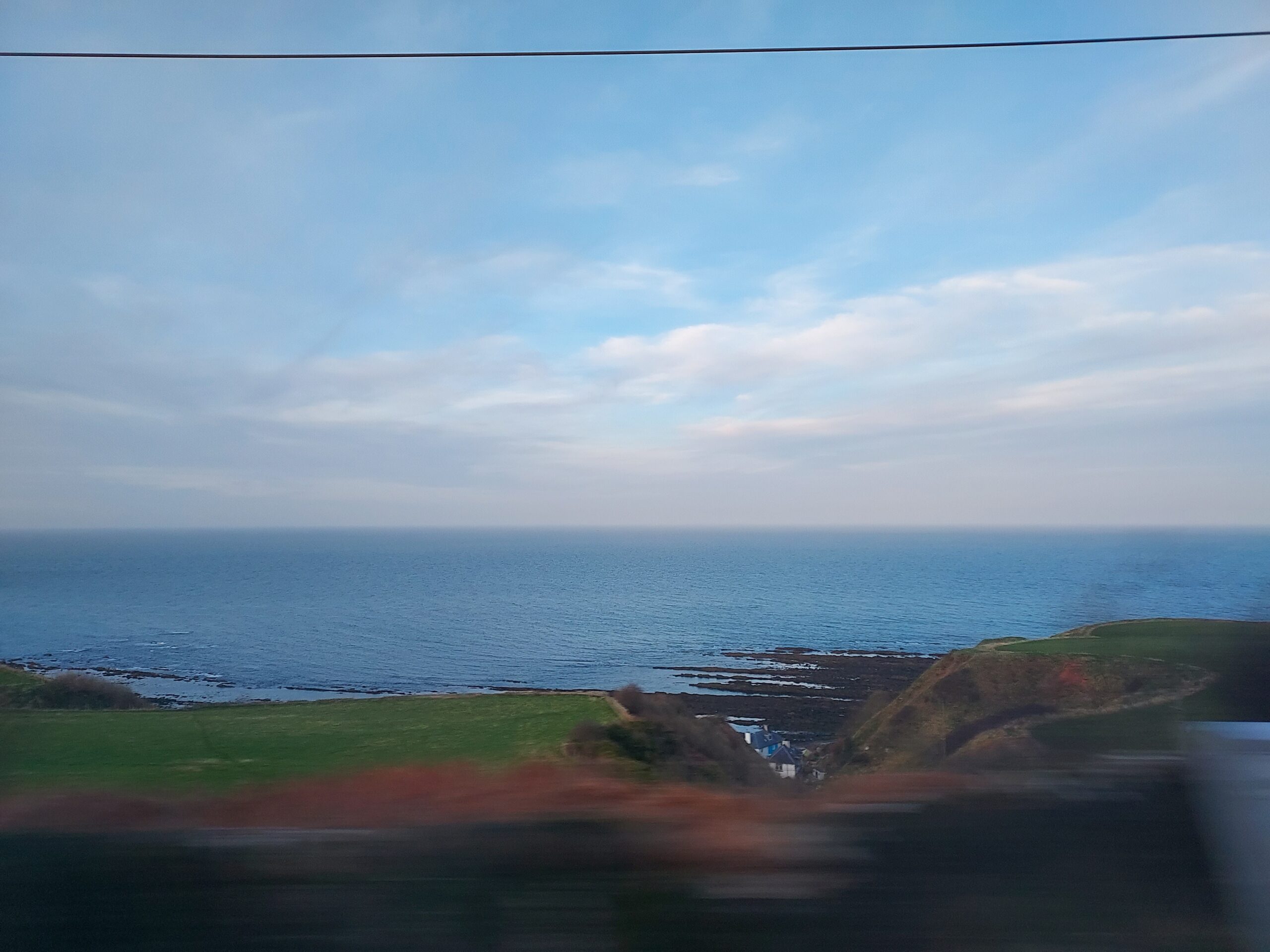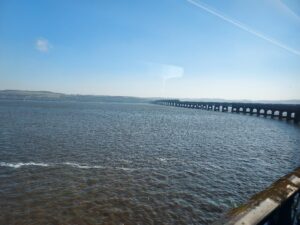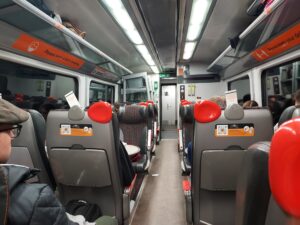My first overland trip from England to Scotland
I went to Scotland last week for the second time this year, but this time I travelled overland instead of flying from England. I went there to do Sprint Scotland, which consisted of 3 sprint orienteering races, with the second race in knock-out sprint format.
The race was held in Dundee. Although there is an airport just next to the race venue, the only airline serving it is Loganair for London City. The next nearest airport is Edinburgh which has direct flights to my preferred airport near my home, Southampton, but again it’s operated by Loganair. Loganair is a crap airline which charges about 4 times of the easyJet price for Anglo-Scottish flights (as expensive as £300 each way) so there is no way I will take this rubbish airline. Also, there weren’t attractive fares by easyJet between Gatwick (where trains from Bournemouth are cheap on the coastway) and Edinburgh as well, and it required lengthy connections on both ends of the flight so I finally considered it was not a good value to fly this time, and instead I bought a railcard-discounted super off-peak return train ticket between Bournemouth and Dundee at £136.80 before March price rise, which allowed unlimited breaks of journeys en-route and had no time restrictions over Friday (Friday restrictions had been temporarily lifted) to Sunday on the canonical route, using South West Main Line to London then East Coast Main Line to Scotland, offering me complete flexibility to take whichever trains arrived first on the route.
I departed Friday morning on a train to London and visited a museum there, then took the 14:00 LNER Azuma service from London Kings Cross to Aberdeen. This was my third time I took this service, with a round-trip to York in last year.

The LNER Azuma trains, officially classes 800 and 801, are modern high-speed train sets capable to run at 225 km/h, but currently operated at 200 km/h due to signalling limitation. They replaced the previous dated InterCity 225 trains on the line.
The service ran non-stop for more than 300 km from Kings Cross before making its first call at York. Afterwards, it called at Darlington, Newcastle then Berwick-upon-Tweed, the final stop in England close to the Anglo-Scottish border.


The railway line runs close to the coast near the border, giving a spectacular view when sitting on the right going North. After just over 4 ½ hours of high speed running, the train reached Edinburgh, the capital of Scotland, 632 km down the line from Kings Cross. It switched from electric to diesel at Haymarket to continue its journey along the non-electrified line to Aberdeen, making a few calls along the way before arriving Dundee.
Race 1 started on Saturday morning, which was the qualification of the knock-out sprint in the afternoon with the top 18 qualifying for the 3 mass-start groups of 6. However, due to lack of training since the pandemic, and the course having significant climb, I didn’t get a good enough result to get qualified. I gained 580 world ranking points in the race.
Non-qualified competitors were interval started after the mass start groups, in the order of the qualification result with the fastest starting first. My ranking got worse and worse in the afternoon as I got tired, getting the bottom 5 in the morning, then bottom 3 in the quarter final, bottom 2 in the semi final and the bottom in the final.
The final race, race 3, started on Sunday morning. The terrain was so steep that the map was in 1:4000 with 5 m vertical interval, and I got great trouble because of that. As the terrain was so steep I basically had no hope of getting a good result (I am very bad in ascent), but I didn’t expect that I would be stuck for 10+ minutes trying to climb a slope to get to a control! I used the major road to the junction and attempted to climb straight onto control 14, but it was so steep that I couldn’t get up! As a result, I got a DFL in the race and only 201 WRE points, taking 0:43:33 to complete the race while the winner only used 0:12:29, less than the time I needed for that single fucking leg.
I travelled back to London after the final race. Under normal circumstances a direct high-speed LNER train is the fastest way to get back to London Kings Cross, however, on that day, engineering works closed the line south of York and trains had to make a diversion, extending the normal journey time by more than an hour.

There are normally 2 operators serving the section between York and Kings Cross. LNER is the primary operator on the route which is a franchised operator, while Grand Central is an open-access operators only having a small number of departures on the route. In addition, Lumo also runs a few departures between Edinburgh and Kings Cross which don’t call at York. Because of engineering works, LNER diverted all its trains to run via Leeds on routes where their crew have the required route knowledge, but Grand Central used a route conductor and ran its trains using the most direct available route. Furthermore as Grand Central trains don’t make any calls between York and Kings Cross, on that day one of the departures would overtake the LNER train I took between York and Kings Cross, so I left the LNER train at York and wait for the next train for an earlier arrival into Kings Cross. The Grand Central train I took was listed as “reservation mandatory” in the timetable and was shown as sold out but, like other trains in Great Britain with the exception of Caledonian Sleeper trains, no one would actually check your reservation before boarding so it was actually just a mean to control ticket sales, by disallowing people to select that train when buying tickets. Therefore I could just use my ticket to board it if I didn’t mind standing in an overcrowded train for 2.5 hours to arrive London half an hour early. But in reality, that train was less crowded than the LNER train I took despite the LNER train wasn’t sold out.
But despite it being less crowded, taking a Grand Central train was not a pleasant experience. The class 180 train is old, noisy and shaky and it runs on diesel alone, compared to modern class 800 “Azuma” trains used by LNER which runs on electric between Haymarket and Kings Cross. The reservations were a mess as decades-old paper reservation slips are used, and they showed the previous departure on the train, the overhead luggage rack is too small for even a small backpack.

After I arrive Kings Cross, I headed into a hostel for the night and completed my journey back home on the day afterwards.